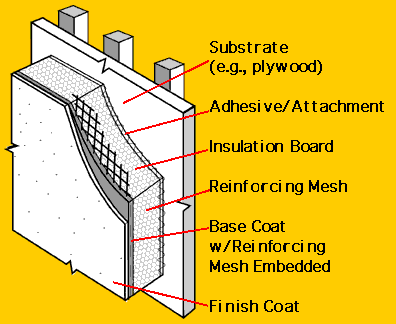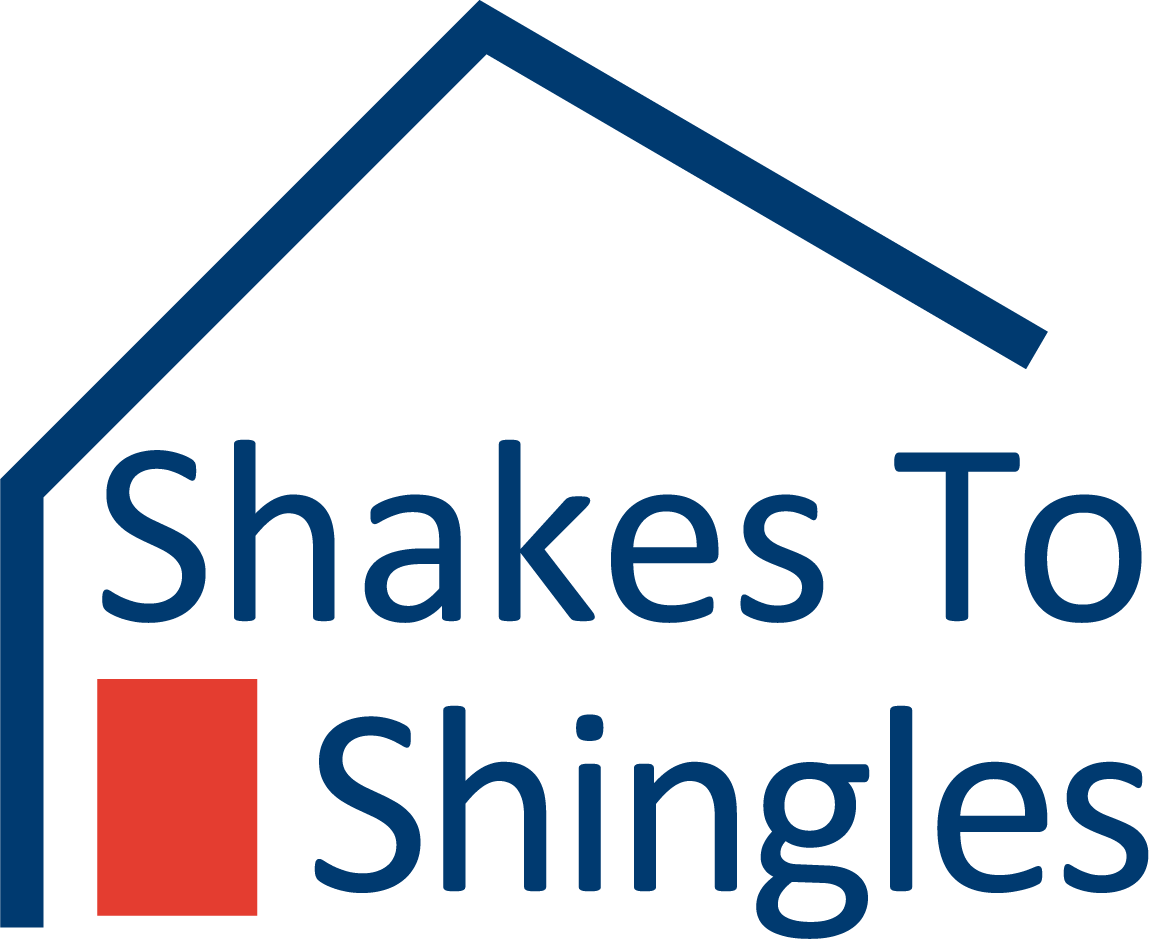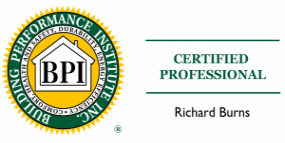Exterior Insulation and Finish Systems (EIFS) are continuous insulation — multi-layered exterior wall systems that are used in homes and commercial buildings. EIFS were introduced in the US in the 1960s and were first used on commercial buildings and then later on homes.
EIFS a nonload bearing, exterior wall cladding system that consists of an insulation board attached either adhesively or mechanically, or both, to the substrate; an integrally reinforced base coat; and a textured protective finish coat. This type of system is often referred to as artificial stucco. Another option is EIFS with Drainage, which is the predominate method of EIFS applied today. EIFS with Drainage helps to eliminate moisture before it has an opportunity to enter the wall cavity.

EIFS System Components
- A water-resistive barrier (WRB) that covers the substrate
- A drainage plane between the WRB and the insulation board that is most commonly achieved with vertical ribbons of adhesive applied over the WRB
- Insulation board typically made of expanded polystyrene (EPS) which is secured with an adhesive or mechanically to the substrate
- Glass-fiber reinforcing mesh embedded in the base coat
- A water-resistant base coat that is applied on top of the insulation to serve as a weather barrier
- A finish coat that typically uses colorfast and crack-resistant acrylic co-polymer technology.
Benefits of EIFS
EIFS can reduce air infiltration by as much as 55% compared to standard brick or wood construction. And since walls are one of the greatest areas of heat and air conditioning loss, improvement in the wall insulation can be very meaningful in terms of energy conservation.
Most EIFS systems are specially formulated with 100% acrylic binder, which gives EIFS superior resistance to fading, chalking and yellowing — tending to maintain their original appearance over time. EIFS also have excellent resistance to dirt, mildew and mold, which helps keep the building exterior looking clean and freshly painted and cleans easily by hosing it down. The systems are designed to be very flexible, which makes them highly crack resistant.
Research supported by the Department of Energy, has validated that EIFS are the “best performing cladding” in relation to thermal and moisture control. Water intrusion is seldom a problem on commercial structures with EIFS. Water intrusion damage to homes is uncommon, but when it does occur, the moisture typically affects only small areas which can be easily and inexpensively repaired.
Lastly, EIFS have passed fire resistance, ignitability, intermediate multi-story, and full scale multi-story corner tests; meeting the standards set forth with each test.
Potential Problems with EIFS
A potential problem with EIFS is that moisture can get trapped behind the highly water resistant material with no way out. This can cause the framing to rot and foster the growth of mold between the exterior and interior walls. With EIFS this can be exacerbated by its superior water resistance. Once moisture gets in, regardless of its origin, it usually has no escape. The main locations where water tends to infiltrate into the framing structure of a building using an EIFS is around doors and windows, where the roof connects to the EIFS (roof flashing) and below extended exterior deck connections. Also, any moisture from within the home trying to find a path out will likely be thwarted by the EIFS.
The exterior and interior climates in many regions throughout North America provide limited drying potentials due to high relative humidities throughout the year (particularly problematic in hot-humid and mixed-humid climates). Limited drying potential provides inadequate drying for EIFS where moisture sensitive components are used without a provision for drainage. Inward drying is essentially eliminated by the installation of interior vapor barriers or impermeable interior finishes such as vinyl wall coverings.
The principal wetting mechanism for EIFS assemblies is rain. Just as all cladding systems, EIFS are sensitive to the frequency and severity of rain. The amount of rainfall deposited on a surface determines the type of approach necessary to control rain (storage/reservoir, drained or perfect barrier).
EIFS can provide an attractive lightweight and energy-saving cladding for a building. However, rainwater and climate must be managed and face-sealed perfect barrier approaches (reliance on exposed sealants) cannot provide acceptable rain control or durability. To allow for drying of incidental moisture, such assemblies also should not contain interior vapor barriers or impermeable interior finishes.
The beautiful architectural designs made possible by EIFS (synthetic stucco) systems make these homes very desirable and marketable. It is critical, however, to carefully maintain these systems to prevent water intrusion and deterioration.




